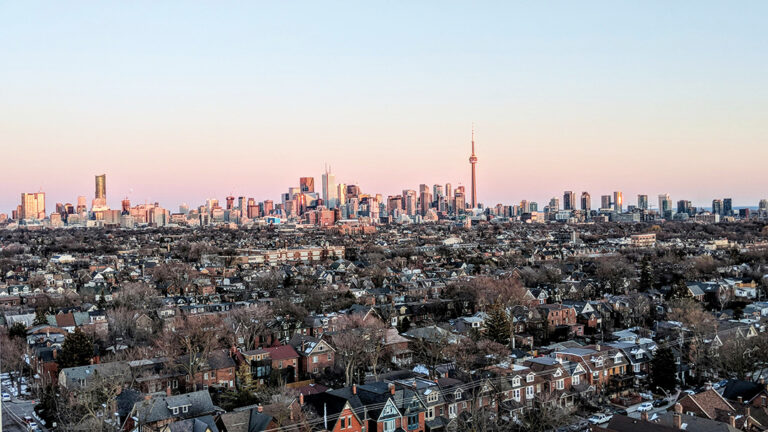In mid-March, the Canada Mortgage and Housing Corporation announced the result of its Rapid Housing Initiative. The RHI, with a budget of $1 billion, will create 4,777 housing units (more than the initial target of 3,000) intended primarily for the homeless, those at risk of becoming homeless, or other vulnerable persons. Since then, announcements of projects accepted under RHI have occurred almost daily, and the projects will be rising quickly across the country. We hope that the initiatives will see the light of day without disruption — they are needed by so many.
But community-based or affordable-housing projects often face a type of opposition nicknamed NIMBY—the “not in my back yard” syndrome, which can be summarized as “we are not officially against the project… but this one would be more appropriate if it wasn’t in our neighbourhood.”
There are plenty of examples of this type of challenge in the media these days, such as this case in Toronto, or this one in Saskatoon.
The NIMBY phenomenon is far from new and, of course, it’s not just for community-housing projects. However, the CMHC was concerned, in the affordable housing context, as it stated in a research note published in December 2020: “The Not-in-My-Backyard syndrome is a potential challenge for implementing some of the aspects of the National Housing Strategy (…) While a high proportion of citizens may support, in principle, the construction of social and affordable housing in their city, they are often less willing to support, in some cases oppose, its construction in their own neighbourhoods.”
The more common criticisms of new housing projects are, in particular, the fear of a drop in the existing property values, an increase in traffic, an increase in crime, or the idea that new residents will be too different from the established population. Generally, these fears are unfounded.
To overcome a NIMBY type opposition, several guides or resources exist (here, for example). Almost all experts will say this: the key to overcoming the opposition is often communication, consultation with the residents of the neighbourhood where a project will be established and collaboration.
But with needs as great as they are now, some say there’s no room to set aside time for talk and consultation. That’s the case of the former director of the B.C. Non-Profit Housing Association, Kishone Roy. In a series of tweets, collected here, Roy points out that many people in need of social housing cannot, for various reasons, attend consultation hearings scheduled for a project. He also says “there is nothing wrong with these projects. No harm is caused by social housing. Not economically, not physically, not socially. Harm happens when and where it does not exist.”
***
While many of the projects that face “not in my backyard” opposition are in urban settings, NIMBY also takes place in rural communities, where housing needs are just as strong.
We recently discussed the topic with Fay Martin of Places for People (one of their projects, the Minden Tenant Inclusion Research Project, received a $47,500 grant from the Centre). According to Martin, NIMBY in a rural setting is more “personal” and highlights the prejudices that exist against tenant status in a world where being a homeowner is highly valued.
“Because usually NIMBY is, when we talk about it, it’s ‘we, people who live in our nice little bungalows, don’t want other kinds of housing on our street.’ But that really is about ‘We don’t want those people here,’” says Martin. In rural areas, “it’s class. It’s, you know, real people own houses. And if you have to rent, you’re second best. Most of the rental accommodations in the county are social housing, community housing, but if you have to rent community housing, that means you really are very substandard, right? [As if] renters [were] not good people.”
That is obviously not the case. Housing is essential to help people overcome different challenges in their lives.
So the distinction between discrimination and NIMBYism often ends up being paper thin. In fact, the Ontario Human Rights Commission treats NIMBYism as a human rights issue.
According to Statistics Canada, almost 284,000 households had someone on a waiting list for social or affordable housing in 2018, which represents 2% of households in the country. Not to mention all those who are not on a list but are hoping for housing that corresponds to their financial means. Twenty-two per cent of Canadian households, again in 2018, spent more than 30 per cent of their income on their homes. If you add to that the number of households that were living in housing that was inadequate or in need of major repairs, 31% of the population fits the bill. More than one in ten Canadian households (11,6%) live in core housing need.
As Kishone Roy said on Twitter, “Housing delays means housing is denied. There have been 30 years of delays already.” The Centre, of course, values dialogue and participation. But we also value transformation. We are in the process of thinking about how we could explore the NIMBY topic in a webinar in the near future.
Let’s leave the last word to Fay Martin this month.
“With NIMBYism, it’s all of our problem. It’s still our problem to educate people about why NIMBYism is an expensive, unaffordable phenomenon. We can’t afford it because people need houses and everyone needs a place to live. And if it’s not beside you and it’s not beside me, who is it beside?”
Have a wonderful May!
This editorial appears in the InfoCentre newsletter. To subscribe to our monthly newsletter, click here.



